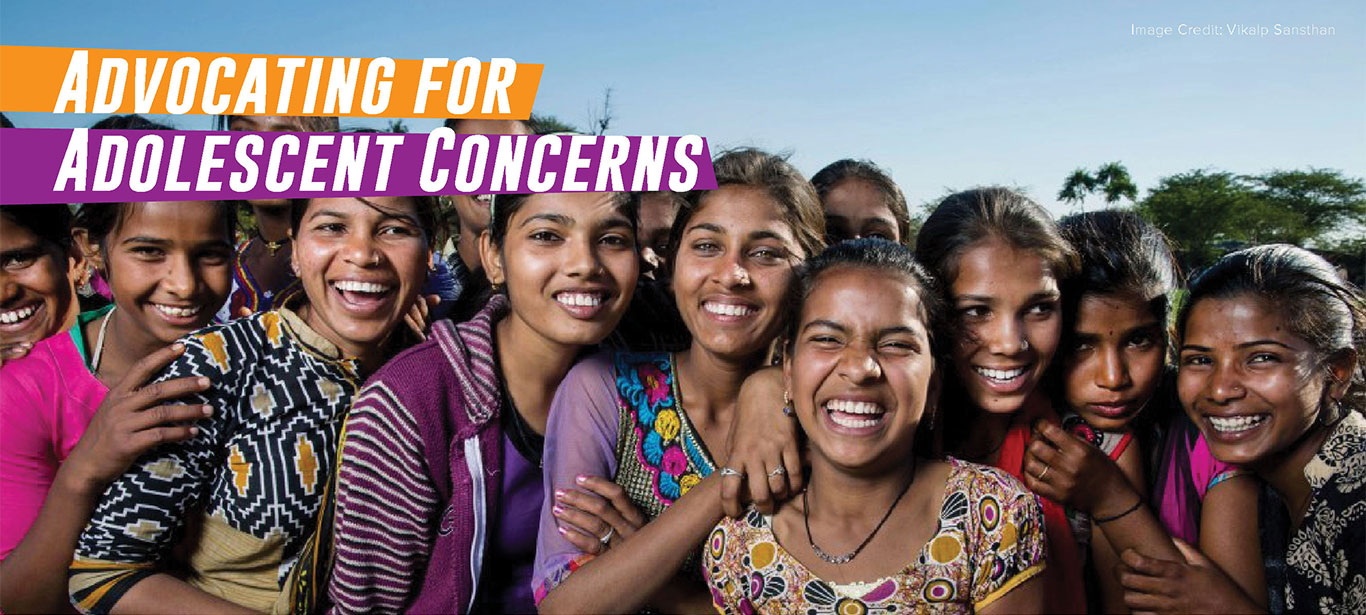Adolescence marks a phase of transition from childhood to adulthood. Accompanied physical, emotional and physiological changes, this formative period awakens curiosity about the world, sexuality and independence, in ways that sets the adolescent apart from the younger child and the adult. The familial, community and peer environments within which these changes occur, alongside economic conditions, nutritional levels, quality of education and availability of resources shape the nature of long term vulnerabilities and harm. Mental health problems are known to take root in this sensitive period, which can limit the opportunities to lead fulfilling lives as adults.

Who is an adolescent?
According to WHO, biologically adolescence covers persons between the ages of 10 and 19. Youth refers to those between ages of 10-24, so adolescence is a sub-set of youth. For purposes of this platform, adolescence refers to ages 10 to 19.


The World Health Organisation and the United Nations recognise adolescence as the age between 10 and 19 years, while the term ‘young people’ is often used to refer to those between 10 and 24 years. Thus, adolescence is often seen as a subset of youth, in continuum with childhood.

Principles guiding responses to adolescents
The Convention on the Rights of the Child (CRC) recognises adolescents as a category within the child, calling for responses consistent with their maturity, evolving capacities and development, while securing protection available to children.
While the Convention recognises the rights of all persons under 18 years, the implementation of rights should take account of children’s development and their evolving capacities. Approaches adopted to ensure the realisation of the rights of adolescents differ significantly from those adopted for younger children.
(CRC General Comment No. 20)
Evolving capacities are "an enabling principle that addresses the process of maturation and learning through which children progressively acquire competencies, understanding and increasing levels of agency to take responsibility and exercise their rights.
(CRC General Comment 20, para 18)
"Assessment of a child’s best interests must include respect for the child’s right to express his or her views freely and due weight given to said views in all matters affecting the child.
.... as the child matures, his or her views shall have increasing weight in the assessment of his or her best interests."
(CRC Gen Comment 14,)

Are law, policy and support services for adolescents compliant with CRC principles?
Is there a consistent recognition of adolescents in Indian law, policy and support services? Do law, policy and support services adhere to the principles of the Convention on the Rights of the Child (CRC) that recognise evolving capacities of adolescents and their right to be heard, as essential part of determining the best interests of the child?
Importantly, are policy measures in one area alert to cross sectoral impact on another area of adolescent life? Do they prioritise harm prevention? Do they efectively tackle efects of poverty and deprivation to minimise vulnerability of adolescents, including to harm. Are corrective responses based on principles of restoration and rehabilitation, rather than punitive? This platform takes a closer look at how the CRC principles relate to each of policy areas relating to adolescents, and how it impacts other areas, with a view to developing greater compliance with the best interests of adolescents, and their right to development without discrimination.
